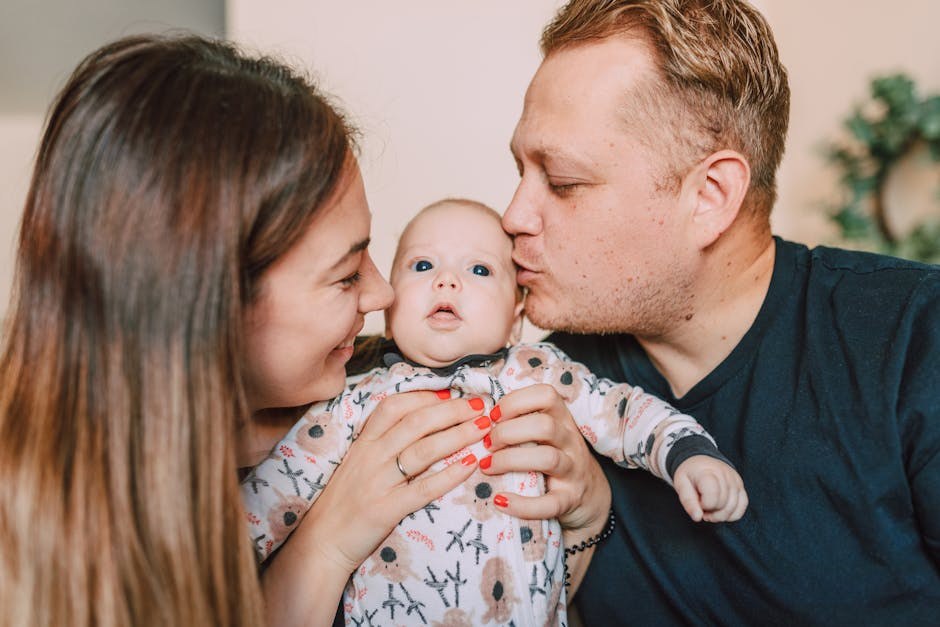It is confusing when a partner seems present on the surface yet distant where it matters most – inside. You reach for intimacy, try to name what you feel, and watch the conversation slide away as if greased. If you have wondered whether you or someone you love might be emotionally unavailable, you are not alone. The pattern is common, complicated, and maddening, especially when affection shows up in bursts and then vanishes. This guide reframes the idea in clear, everyday language, explores why it happens, highlights recognizable signs, and outlines gentle practices that make closeness feel safer.
What this label actually points to
“Emotionally unavailable” is not a clinical diagnosis or a formal psychological category. It is an everyday description of behavior – a shorthand for the ways a person consistently dodges conversations about feelings, keeps their inner world out of reach, or makes bonding feel like trying to hold water. The emotionally unavailable partner may be charming, reliable at work, even generous with practical help, yet difficult to read where tenderness and vulnerability live. When topics turn toward needs, hurts, hopes, or commitment, they tend to go quiet, make a joke, or change the subject.
Because the term comes from lived experience rather than a handbook, its edges are fuzzy. Still, the pattern is recognizable: communication skims the surface, intimacy feels precarious, and attempts to go deeper fizzle out or spark defensiveness. In other words, being emotionally unavailable describes a style of relating – the emphasis is on how someone engages, not on whether they have feelings at all.

Why someone pulls back emotionally
A temporary retreat
Sometimes a typically open person turns emotionally unavailable for a while. Stress at work, family conflict, grief, or shame can push someone into self-protection. When life feels overwhelming, withdrawing can seem like the safest route. In these seasons, the person is not allergic to closeness forever; they are stretched thin, worried they will break down, or convinced that sharing will make things worse. The behavior is still emotionally unavailable – yet it may lift once the pressure eases or the issue is addressed.
A long-standing style
For others, being emotionally unavailable is the default. They may express care through actions – driving you to the airport, fixing your sink, checking you got home – while avoiding naming feelings. This avoidance can grow from earlier experiences: a relationship that hurt, a childhood where emotions were mocked or ignored, low confidence, or simple discomfort with verbal intimacy. None of this means the person lacks depth; it means words and vulnerability feel risky. In relationships, that risk often shows up around labels and long-term plans, which can trigger distance or ambiguity.
Common signs you might notice
Not every sign will appear for every person, and context matters. Still, if you keep asking what it looks like to be emotionally unavailable, you will likely recognize several of the patterns below.

-
Conversations skim the surface
When talk edges toward feelings, the emotionally unavailable partner steers back to jokes, logistics, or facts. They prefer easy topics because vulnerability feels exposed. You might leave long chats realizing you learned nothing about what they actually feel.
-
Depth triggers a subject change
Try to share something meaningful and the discussion derails – suddenly the dishes, a show, or a phone notification takes center stage. If pushed, someone emotionally unavailable may go silent or end the exchange altogether.
-
Closeness feels smothering
Extended togetherness – think lazy weekends talking about the past or imagining the future – can spark discomfort. An emotionally unavailable person often seeks distance to breathe, reappearing when the emotional temperature cools.

-
Labels are avoided
Defining the relationship reads like a trap. The emotionally unavailable partner keeps things casual or vague because commitment seems like losing freedom. You may hear, “Let’s not rush,” long past the point when basics should be clear.
-
Affection runs hot and cold
One week they are warm and present; the next they are aloof. The unpredictability creates a rollercoaster. Many people become attached to the highs – a dynamic that keeps them engaged with someone emotionally unavailable even when the lows sting.
-
You cannot tell where you stand
Because feelings are rarely named out loud, you piece together clues and often guess wrong. Ambiguity is a hallmark of being emotionally unavailable – it leaves partners uncertain and second-guessing their own perceptions.
-
Grand gestures are rare
They might help in practical ways, but dropping everything for you risks sending a message of deep attachment. Someone emotionally unavailable may avoid gestures that could be read as “too much.”
-
Feelings talk is minimized
Even outside the relationship – work stress, family drama, personal doubts – the emotionally unavailable person stays at the level of facts. They report events but skip how those events land in their body and heart.
-
Preference for casual or open structures
Because closeness brings pressure, loosely defined arrangements feel safer. An emotionally unavailable partner may prefer open or noncommittal setups to preserve exit routes and emotional distance.
-
Cutting contact feels easier than repairing
When conflict or disappointment strikes, disappearing can seem simpler than discussing hurt. Ghosting is an extreme version of emotionally unavailable behavior – not because the person does not care, but because confrontation feels unbearable.
-
Frustration becomes your baseline
Perhaps the clearest sign: you routinely feel confused, lonely, or on edge around them. Loving someone emotionally unavailable can make you work twice as hard for half as much clarity.
How availability can grow
There is real hope here. Emotional habits can soften with care, patience, and practice. No one can be forced to open up – that effort must be voluntary – yet small steps compound. If you tend to be emotionally unavailable, or you love someone who leans that way, the ideas below offer a gentle path forward.
-
State needs in plain language
Begin by identifying what feels hard to share and why. Is the obstacle a fearful memory, a learned rule, or simple unfamiliarity with naming emotions? Telling a partner what you need – “I want to feel heard when I’m anxious” – reduces guesswork. For the person who is emotionally unavailable, this kind of directness can feel awkward at first, yet it builds confidence over time.
-
See your partner’s vantage point
Your partner is not trying to corner you; they want to understand where they stand. Practicing empathy turns a tug-of-war into a shared task. When someone emotionally unavailable acknowledges the other person’s needs, it lowers the temperature and invites collaboration.
-
Set a pace you can keep
Rushing sparks resistance. Agree on a tempo that respects both people’s thresholds – weekly check-ins, short but focused conversations, or questions chosen in advance. Boundaries are not walls; they are routes to consistency. For the emotionally unavailable partner, predictable steps feel safer than sudden deep dives.
-
Swap secrecy for transparency
Silence breeds suspicion. You do not have to share everything, but share enough that your life is legible: plans, worries, wins, and even the moments you would rather hide. Openness counters the core habit of being emotionally unavailable and fosters trust. It also reduces the mental load on the other person, who no longer has to decode mysteries.
-
Create regular time that is nonnegotiable
Date nights, walks, or phone-free meals strengthen connection. Showing up consistently says, “You matter,” without fireworks. For someone emotionally unavailable, this rhythm gradually makes closeness feel ordinary rather than threatening.
-
Own your reactions
Emotions are yours to manage. When feelings go underground, they often erupt as sarcasm, stonewalling, or sudden anger. Name what happens inside – “I’m shutting down because I’m embarrassed” – and choose a response instead of a reflex. This responsibility is a turning point for anyone who has been emotionally unavailable.
-
Take a measured leap
There is no way to practice vulnerability without – eventually – being vulnerable. Choose one specific area where you will let yourself be seen, and step in. Use the supports above as a safety net. People who have been emotionally unavailable often discover that fear shrinks after the first few honest tries.
-
Seek support when history weighs heavy
If old pain drives today’s patterns, outside help can be invaluable. A therapist, a group, or a trusted mentor provides structure and practice for naming what once felt unspeakable. This is not about fixing a broken person; it is about giving someone who has been emotionally unavailable new tools for connection.
Practical notes for both sides
If you recognize yourself as emotionally unavailable, start small. Pick one manageable practice – a daily check-in message, a weekly “state of us” conversation – and keep it. Mistakes will happen. When they do, repair quickly: acknowledge what went wrong, name what you felt, and try again. Remind yourself that discomfort is not danger; it is the feeling of growth. If you love someone who is emotionally unavailable, set clear boundaries about what you can accept, request clarity instead of hints, and listen without interrogating. Steadiness plus kindness goes further than pressure.
Consider language, too. Some people freeze when asked “How do you feel?” but open up when invited to describe the moment: “What was today like?” or “What part of that meeting stuck with you?” Questions that narrow the focus are easier for someone emotionally unavailable to answer honestly. When the door cracks open, appreciate the effort – a short, sincere share matters. Appreciation is not manipulation; it signals safety.
Lastly, remember that caring often shows up differently across people. A person can be emotionally unavailable and still value you deeply. Acts of service, practical reliability, and thoughtful gestures are real forms of love. Naming them out loud – and letting them count – does not mean settling for less; it means recognizing what is present while you both work on what is missing.
Bringing it together
Emotional distance is rarely about a lack of feeling; it is about protection, habit, and fear. The patterns may be temporary or long-standing, but in either case the experience on the receiving end is similar: mixed signals, thin conversations, and a constant sense of uncertainty. Naming the pattern – being emotionally unavailable – is not an accusation; it is a map. Maps do not move your feet, though. Change grows from choices repeated over time: clearer communication, patient pacing, openness, responsibility for reactions, brave transparency, and, when needed, outside support. Step by step, people who once felt emotionally unavailable can learn that closeness is not a trap; it is a place where both partners can breathe.